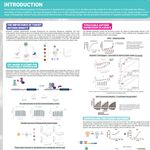Assistant Professor, Department of Biomedical Informatics, Ohio State University Medical Center
BIOGRAPHY
OCT 03, 2024 10:00 AM PDT
Developing a targeted quantifying method for immune cell markers with the Stellar mass spectrometer
Speaker
Event Date & Time
Date: October 3, 2024
Time: 10:00am PDT, 12:00pm CDT, 1:00pm EDT
Abstract
Advances in proteomics and mass spectrometry enable the study of limited cell populations such as performing mouse models. Low-protein load studies often require two steps to perform differential expression analysis between biological conditions. Initial sample characterization experiments to determine proteins and corresponding peptides have been almost exclusively dependent on high-mass accuracy instruments. The discovery results are then used to develop targeted quantitation experiments to better define biological changes based on biology. While triple quadrupoles offer fast and sensitive low-mass accuracy measurements, these instruments are effectively restricted to targeted proteomics and require tremendous effort to create effective methods. Linear ion traps (LITs) offer a versatile, cost-effective alternative capable of both targeted and global proteomics.
Here, we describe a workflow using the newly released Thermo ScientificTM StellarTM mass spectrometer (MS) that rapidly develops targeted proteomics assays from global data-independent acquisition (DIA) measurements without needing high mass accuracy. We demonstrate measuring low-level proteins such as transcription factors and cytokines with quantitative linearity below two orders of magnitude in a 1 ng background proteome without requiring stable isotope-labeled standards. From a 1 ng sample, we found clear consistency between proteins in subsets of CD4+ and CD8+ T cells measured using high dimensional flow cytometry and LIT-based proteomics. Based on these results, we believe hybrid quadrupole-LIT instruments represent an economical solution to democratizing mass spectrometry in a wide variety of laboratory settings.
Learning Objectives
- How to use a nominal mass spectrometer for confident sample characterization
- Newly developed software routines used to convert untargeted data to automate targeted PRM method creation
- Learn about the novel data acquisition schemes of the Stellar MS for low-protein load targeted quantitation
Webinars will be available for unlimited on-demand viewing after live event.
You May Also Like
Loading Comments...





